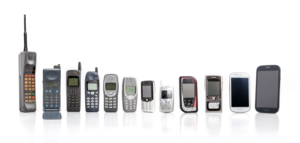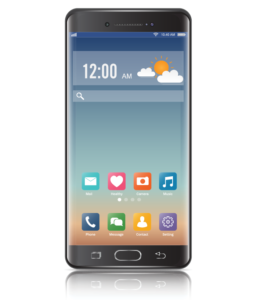Read the Following Selection
Read the following selection, or click on the play button below to listen aloud.
Phones on the Go
New Yorkers could not believe their eyes. There, out on the sidewalk, a man seemed to be making a phone call! The crowds walking by were amazed.
Today, no one would look twice at someone using his cell phone as he walked in the street. But back on April 3, 1973, it was an amazing sight. That is because it was the first cell phone call ever made.

One Heavy Little Phone
Scientists and engineers had been working for many years to create a phone that could be used anywhere and was not tethered by a cord. The biggest problem was making a power source that was not too heavy to carry. In the mid-1940s, engineers had built a mobile telephone that could be used in a car, but the phone weighed about as much as a 12-year-old child. Imagine carrying that phone around!
The phone that Martin Cooper used on the streets of New York in 1973 was a big improvement over those earlier, heavier phones. He had been working on the phone for some time and he knew he was in a race with other researchers to create the first cell phone that anyone could use anywhere. Cooper’s first phone call on his cell phone was to his main rival, Joel Engel. “Joel, this is Marty,” began that first-ever call. “I’m calling you from a cell phone, a real hand-held portable cell phone.”
Cooper’s phone weighed about 0.9 kilograms or about as much as a litre of milk. Compare that with how light a cell phone is today. As Cooper said, “The battery lifetime was 20 minutes, but that was not really a big problem because you could not hold that phone up for that long.”

Keeping In Touch
The phone became known as a cell, or cellular phone because the phone calls are transmitted over areas that are called cells. Cooper invented the device because he hoped it would make people safer, since they could always be in touch and call for help if they needed it. He also thought cell phones could bring people the freedom to work and communicate wherever they wanted.
But Cooper could not imagine how popular his invention would become. “We had no idea that in as little as 35 years more than half the people on Earth would have cellular telephones,” he once said. He also did not foresee concepts such as Facebook and Twitter and how people use cell phones to communicate today.
There are now more than 5 billion cell phones in the world. People use them in many ways, including to find survivors in disasters, to access banks where they are scarce, and even to gather people to start revolutions.
Now, show what you know!
Complete some questions about the reading selection by clicking “Begin Questions” below.









